The Gnu, also known as the “Wildebeest,” is a large hoofed mammal that lives in Africa. There are two different species of Gnu, the Black Gnu and the Blue Gnu. The Blue Wildebeest has a much wider range than their Black counterparts.
Both species are important prey for a number of large predators like hyenas, lions, and leopards. Read on to learn about the Gnu.
Description of the Gnu
Black Gnu and Blue Gnu are closely related, but have several key differences. Blues are larger, standing nearly 5 ft. tall at the shoulder and weighing about 550 lbs. Blacks stand a little under 4 ft. tall and weigh about 225 lbs.
Females of both species are smaller than the males. Blues have grey-brown fur with darker stripes near the neck and chest, while Blacks are solid brown and lack stripes.
Interesting Facts About the Gnu
These two Wildebeest species are uniquely adapted to life surrounded by dangerous predators. Learn more about what makes them so interesting below.
- Here’s to Horns – When a hungry lion is staring you down, it helps to look like you would make a tough meal to swallow. The last thing a lion wants is to sustain an injury during a hunt. The Wildebeest sports a pair of horns on its head to gore any potential threats if necessary. These animals also use their horns to spar with one another for dominance.
- Who’s Who – Their horns are also a great way to tell the difference between the two species. The horns of the Blues sprout outward on either side of their head, and then point slightly backward. They look almost like handlebars on a bike. Conversely, Blacks have horns that curve down and forward towards the front of their face, before curving up and back.
- Sexual Dimorphism – Though you can tell the difference between a male and a female Gnu, it is slightly more different than some other members of the bovine family. Males weigh several hundred pounds more than females do, but both males and females have horns. When all the Gnu are milling together in a large crowd, it can be quite difficult for you to distinguish between the two!
- Herd Mentality – Crowding in large numbers also has the added perk of making it very difficult for predators to hone in on a single animal. With so many bodies moving around, things can get a little confusing! That’s a great strategy when you have to face the like of lions, hyenas, cheetahs, leopards, crocodiles, African wild dogs, and more.
Habitat of the Gnu
Gnus live in several different types of habitats. They inhabit open woodlands, savannahs, grasslands, plains, and more.
Because of habitat destruction, they frequently live in wildlife reserves or game farms, which have their preferred habitats intact. Both the Blues and the Blacks live in similar habitats to one another, though Blacks live in colder climates than Blues.
Distribution of the Gnu
Both species have slightly different ranges, though their populations overlap in some areas. As a whole, Wildebeests used to live across a wider expanse of Africa, but humans have reduced their populations and destroyed much of their usable habitat.
Now, both species live exclusively in southern Africa. They live primarily in South Africa, Botswana, Namibia, Zimbabwe, Zambia, Mozambique, and Tanzania. The Blue Gnu lives throughout much of this range, while the Black Gnu lives only in South Africa.
Diet of the Gnu
Wildebeests are herbivores, which means that they eat plants. The two different species subsist on different types of vegetation. Blues eat mostly grasses, and migrate to follow the growth of grass as they run out of food. Blacks are browsers, and feed on leaves of shrubs and bushes rather than grass. Because they do not rely on the grasses, the Black Gnu does not migrate over large areas.
Gnu and Human Interaction
Even though they live in a relatively restricted range, both species have strong populations. The IUCN lists both the Black and the Blue Gnus as Least Concern. However, they do face threats to their survival.
The Black Gnu lives in a small restricted range due to habitat destruction, and survives only in reserves, zoos, and farms. Despite this, their populations in these controlled environments remain quite high. Other threats to both species include poaching, habitat destruction, and disease from cattle and other livestock.
Domestication
Humans have not domesticated either species of Gnu.
Does the Gnu Make a Good Pet
No, these animals do not make good pets. They are wild animals, and grow much too large for you to keep as a household pet. In most places, it is illegal to own a Gnu as a pet.
Gnu Care
These hoofed mammals live in zoos across the world. They are social, so zoos keep them in herds so they can socialize and reproduce. Herds of Wildebeest live in large enclosures with a variety of grasses and shrubs to browse on.
Additionally, zookeepers provide them with various types of hay, pelleted feed, and minerals, as necessary. It is common for you to see these creatures living alongside other large mammals, like zebras and antelopes. Because of this, some zoos house Gnus in large, mixed-species exhibits.
Behavior of the Gnu
These two species are mostly diurnal, though they do forage during moonlit nights. They are quite social, and live in large herds. Within large herds, males create their own harems, which they defend from other males.
If food is plentiful, herds are incredibly numerous. As food becomes scarce, the herds begin to wander and break apart into smaller groups. The structure of the herds changes based on the season.
Reproduction of the Gnu
Males, known as “bulls,” breed with all the females, known as “cows,” in their herds. After mating, it takes about eight months for the cows to give birth to their calves. Most cows give birth to a single calf, though twins do occur.
The calves can stand and walk quickly after birth, and begin running soon after that. It takes about eight months for calves to become independent of their mothers. Most do not breed themselves until they are over a year old.

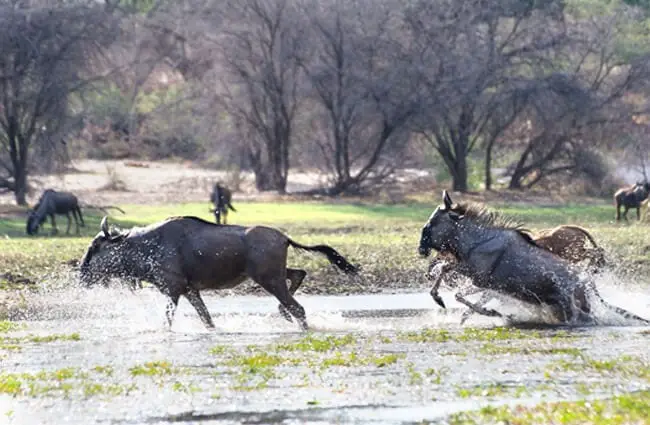
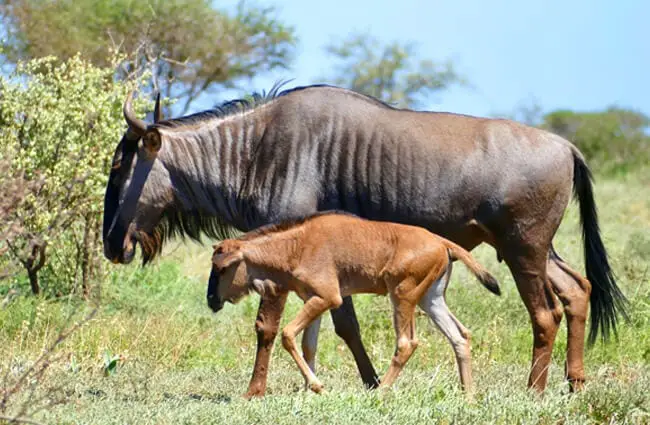




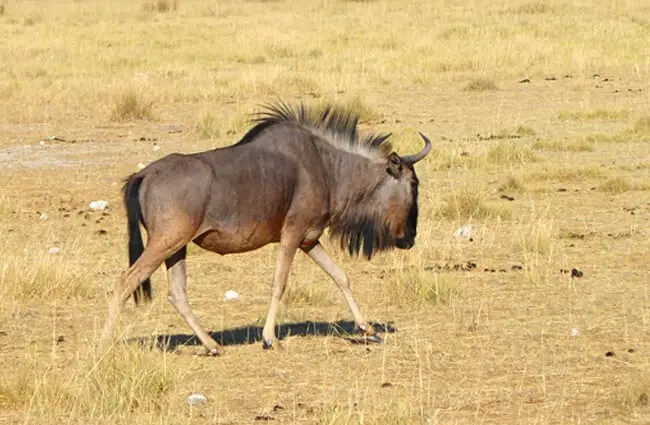

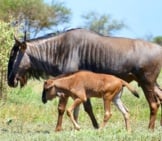
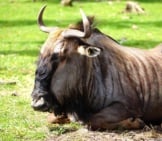


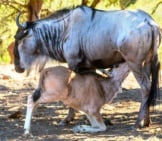
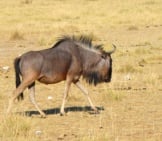
![Red Angus Closeup of a beautiful Red Angus cowPhoto by: U.S. Department of Agriculture [pubic domain]https://creativecommons.org/licenses/by/2.0/](https://animals.net/wp-content/uploads/2020/03/Red-Angus-4-238x178.jpg)












![Red Angus Closeup of a beautiful Red Angus cowPhoto by: U.S. Department of Agriculture [pubic domain]https://creativecommons.org/licenses/by/2.0/](https://animals.net/wp-content/uploads/2020/03/Red-Angus-4-100x75.jpg)

